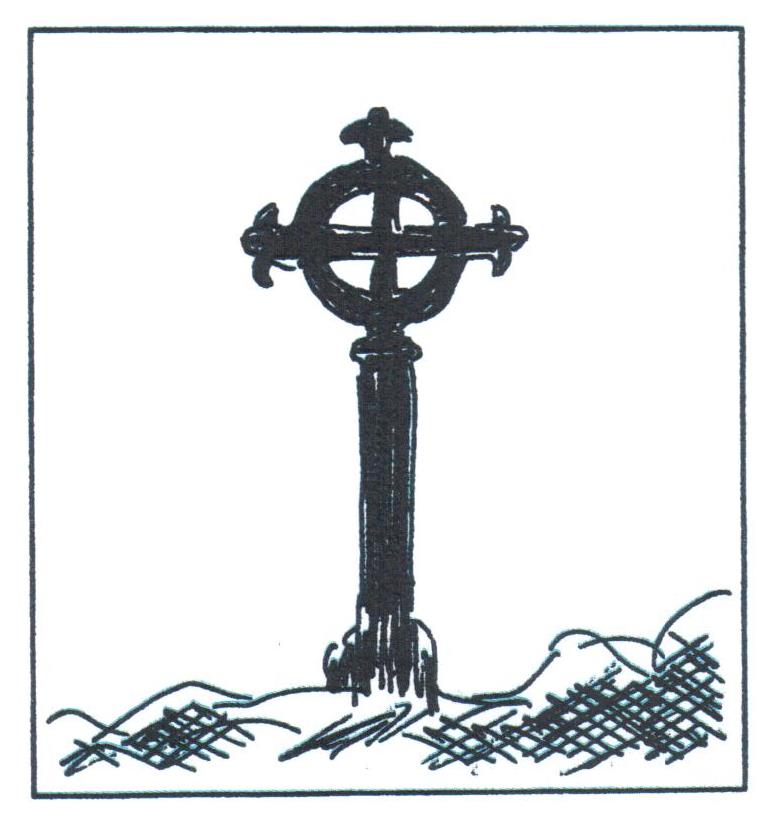A pdf scan of this document is available for download
Walter Brown (WBEB)
Peasemore's Old Stone Cross
 Peasemore's Norman church, dedicated to St Peada according to ancient Peasemore tradition, was built in approximately 1090. The Church and churchyard were consecrated by the great Bishop Osmund, 8ishop of Salisbury. Although St Peada was never officially canonised as a Saint. much as he deserved to be, Bishop Osmund was; so we have the unusual distinction here of having had our Church and churchyard consecrated by a Saint
Peasemore's Norman church, dedicated to St Peada according to ancient Peasemore tradition, was built in approximately 1090. The Church and churchyard were consecrated by the great Bishop Osmund, 8ishop of Salisbury. Although St Peada was never officially canonised as a Saint. much as he deserved to be, Bishop Osmund was; so we have the unusual distinction here of having had our Church and churchyard consecrated by a Saint
The old Norman Church having stood here for some 800 years was demolished in the last century to be replaced by our present Victorian Church. This Church, designed by G.E. Street. who was considered one of the best church architects of his day, is an extremely fine building; but the loss of so much of our old church is much regretted.
At the time of this rebuilding, most of the old Norman Church was thrown out as rubble and used to make up the village street The Rector of Brigbtwalton, who was passing through at the time, noticed our old stone cross lying by the roadside and wisely picked it up and took it home with him to Brightwalton Rectory. There it lay for some 60 years until Brigbtwalton put up their War Memorial at the end of the Pirst World War. The square base of the memorial consists of all that remains of Brigbtwalton' s own ancient Village Cross and on the top of the shaft stands our old Peasemore cross.
Our stone cross is thought to have been positioned as the apex cross on the chancel arcb of the Norman Church in recent centuries. Before that it was probably in the churchyard like Brigbtwalton' s cross.
There are still several Saxon churchyard crosses around, although most are in fragments after these many centuries. They were frequently put up in a prominent place in villages, where priests touring the oountryside preached and conducted services. Saxon chapels - and we may well have had one here before our Norman church - were usually built of wood and so nothing much remains of them today, 1hey were often built later than the
"standing crosses".
Our St Peada was the son of King Penda of Mercia and he was baptised in Northumbria by Bishop Finan in the year 653 AD. This was the time when Northumbria had recently been converted to Christianity by the monks of the Celtic church who had oome across from Iona. When Peada returned to Mercia he took with him four missionaries and between them they oonverted the Kingdom to Christianity. He was the first Christian king of Mercia and the Anglo Saxon Chronicles and the Venerable Bede - the most accurate historian of the day - speak most bighly of his fine character and good works. Unfortunately he died young, but he was succeeded by his brother Wulfere, who oontinued the spread of Christianity and Peada's many religious endowments' out of the love and respect he had for Peada'
During Wulfere's reign, Mercia extended its conquests South to include the whole of Berkshire and some other parts of Wessex; and a oonsiderable battle was fought at Beedon in AD 675, when the Mercians defeated the West Saxons. It is likely that Christianity first came to Peasemore at that time. when Peada's name was famous as the Christian king who was responsible for converting his kingdom.
St Birinus, who arrived in Berkshire some years before the Mercians came South, was an Italian monk who came from Rome to Canterbury, from where he was sent as the first Bishop to Dorchester on Thames. He converted King Cynegils of Wessex to Christianity and some consider him as the real apostle of Wessex. However, many historians consider that the spread of Christianity from Dorcbester did not go much beyond the immediate Thames Valley at that time; and when the Mercians came South, Dorcbester became a Mercian Bishopric. This was in the same year as the Battle of Beedon - All 675. Later in AD 681 when Malmesbury Abbey had just been founded, it was endowed with lands by Aethelred, King of Mercia, who was Peada' s second brother and the successor to Wulfere. Aethelred was also associated with the foundation of Abingdon Abbey. The Kings of Wessex at that time. after embracing Christianity, had relapsed again into idolatry. In short, the Mercian spread of Christianity South and the fame of Peada's name must not be underestimated.
While St Birinus, coming from Rome and Canterbury brought the Roman style of Christianity with him, the Mercians brought the Celtic tradition from the North. We do not know how old our Peasemore Cross is, but it is interesting to note that it is a Celtic Cross.
by Walter Brown (WBEB) not dated




